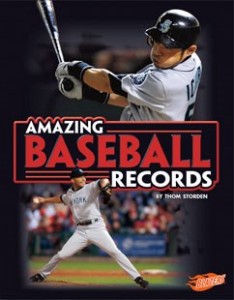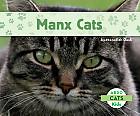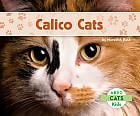Epic Sports Records(Series). North Mankato: Capstone, 2014. 32p. $19.49ea. Gr. 1-5.
Storden, Thom. Amazing Baseball Records. 978-4914-0740-0.
Storden, Thom. Amazing Basketball Records. 978-4914-0740-0.
Storden, Thom. Amazing Football Records. 978-4914-0740-0.
Storden, Thom. Amazing Hockey Records. 978-4914-0740-0.
The best of the best of all time! Records, Photographs, and Statistics to thrill your avid sports fan. Includes full color photos, a table of contents, callout definitions, a glossary, read more and index. These would be a great interest starter for reluctant readers.
700; Sports Robin Bartley, Davis Elementary School
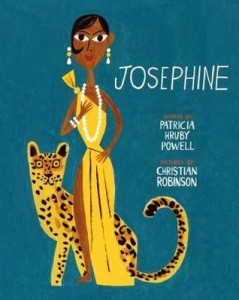
Hruby Powell, Patricia. Josephine: The Dazzling Life of Josephine Baker. Chronicle Books, LLC. 2014. 9781452103143. 104 pages. $17.99. Ages: 7-10.
Josephine Baker was a risk taker. She also loved to be the center of attention. From a very young age, Josephine loved to dance and perform in front of a crowd. And because of her love for music and adventure, Josephine Baker left home at an early age to follow her dreams of being a performer. This non-fiction picture book provides a wonderful background of this performer and all that she endured to gain the fame she wanted. It also provides the hardships she endured along the way. Children of all ages will enjoy the fantastic pictures and the flow of the writing.
Non-Fiction/Biographical Krista Goodzinski, Mars Area Centennial School
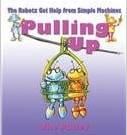
The Robotx Get Help from Simple Machines (series). New York: Crabtree, 2014. 32 p. $20.75 ea. Gr. K-3.
Bailey, Gerry. Pressing Down: The Lever. 978-0-7787-0416-4.
Bailey, Gerry. Pulling Up: The Pulley. 978-07787-0417-1.
Bailey, Gerry. Rolling Along: The Wheel and Axle. 978-0-7787-0418-8.
Bailey, Gerry. Sloping Up and Down: The Inclined Plane. 978-0-7787-0419-5.
Bailey, Gerry. Splitting Apart: The Wedge. 978-0-7787-0420-1.
Bailey, Gerry. Winding Around: The Screw. 978-0-7787-0421-8.
RobbO and RobbEE, two robots, create simple machines in each of the books in this series. Each book highlights one simple machine. Explaining the machines and how they work is accomplished through the inventions created by the robots to help them complete their tasks. Real-life examples using photographs provide connections for students to their own lives. Text is large and easy to read. Each book contains a glossary, index and bibliography of additional reading and websites students can visit for more information on the topic presented in the book.
621.8; Simple Machines Donna Bellerby, Lafayette & Maple Shade Elementary Schools
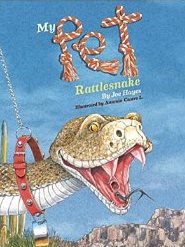
Hayes, Joe. My pet rattlesnake. 9781935955627. El Paso, Texas: Cinco Puntos Press, 2014. $7.95. 32 p. Gr. K-3.One day little Joe is out in the desert, walking around, and he sees a rattlesnake in trouble. Joe saves the snake’s life! That’s when things get weird. The rattler follows Joe home. It’s only a rattlesnake, nothing new for a desert boy like Joe, so he keeps him for a pet. His dad is annoyed, the neighbors are terrified, but soon the friendly snake slithers his way into their hearts. The snake cuddles at the foot of Joe’s bed, plays in the yard, he even scares away a burglar and alarms the police. But is this tale too good to be true? You can find out by reading this rattling of a tail or tale.
Picture Book Lourie Stewart, Dunbar and Connellsville Township Elementary Schools
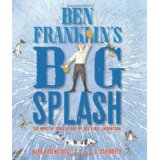
Rosenstock, Barb. Ben Franklin’s Big Splash: The mostly true story of his first invention. 978-1620914465. Honesdale, PA: Calkins Creek, 2014. $16.95. 32p. Grade 2+.
Rosentstock has created an engaging illustrated bio-story of Ben Franklin’s first invention: swim fins! We all know Ben was a renaissance man: inventor, statesman, author and publisher, world traveler. But did you know his inventing began when he was a lad of 11? Turns out the young Ben, in one of the many examples of how unusual a person he was for his time, was a big fan of swimming. Few in the colonies went in the water at all in those days and certainly only for necessity, not for pleasure. But during his long and enjoyable hours in the water – “a delightful and wholesome exercise, one of the most healthy and agreeable in the world” – Ben’s keen powers of observation gave him ideas about how the human body could be adapted to be more fish-like, leading him to experiment with different wooden apparatus for the feet and hands, with varying degrees of success. Sprinkled throughout with quotes from Dr. Franklin, an author’s note at the end, plus timeline, illustrated list of some of Ben’s inventions, and bibliography, I highly recommend this for every elementary school collection.
Just in time for my 3rd and 4th grade lessons on biography! I have always been a huge fan of Ben Franklin; can’t get enough of his life and his nuggets of wisdom and genius. I have no idea how he fit all that he accomplished into one lifetime, but he did. Rosenstock tells this story to kids with the takeaway: Ben Franklin got an idea, acted on it, and if he failed, tried something else. He was constantly observing, creating, failing, trying again. He wasn’t afraid of what others thought of him, he just did. Kids are sure to find this story of another kid, who was a little odd and not afraid to try weird things, appealing! Use this book to segue into other lessons about Ben’s life and inventions.
Picture Book, Biography Kathie Jackson, Plymouth Meeting Friends School
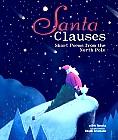
Raczka, Bob. Santa Clauses: Short Poems from the North Pole. Minneapolis: Carolrhoda Books, 2014. 978-1-4677-1805-9. 32 p. $16.95. Gr. K-3.
Santa Clauses: Poems from the North Pole is a thoughtful collection of haiku written by none other than Santa Claus himself. There is one haiku for each day of December, and as readers move through the month there is a growing sense of urgency, excitement, and delight as Christmas approaches and Santa and the elves work tirelessly to prepare for the coming holiday. Some of the short poems describe Santa and Mrs. Claus doing usual holiday tasks (“I untie knots in/strings of lights while Mrs. Claus/ties bows on presents”) while others describe situations that are uniquely North Pole (“Workshop storm warning/in effect, heavy sawdust/accumulation”). Like traditional haiku, some of the poems focus on the wonders of nature during wintertime. The illustrations by Chuck Groenink are gorgeous and have a very retro feel. Overall, this is a great purchase to help celebrate the Christmas season or to use in a poetry unit.
I purchase a few new holiday books every year, and this might not have been a first choice—but it should be! You may know author Bob Raczka from books like Guyku: A Year of Haiku for Boy, or Lemonade: and Other Poems Squeezed from a Single Word. This book is a really unique twist on haiku. I love the concept of writing a new haiku for every day of the month, especially when the author is Santa and the month is one so central to his life and livelihood. It’s thoughtful, creative, and lots of fun. This would be a really fun book to share with students during the month of December by reading one or two haiku a day, or a week’s worth during a weekly library class. Don’t be fooled by the cover art—the illustrations are lively and interesting, and students will love the book as a whole.
811.6, Poetry Lindsey Long, Nye & Conewago Elementary Schools
Dash, Meredith. Calico Cats. (ABDO Kids Cats series) Minneapolis: ABDO, 2015. 978-1-62970-008-3. 24 p. $19.95. Gr. K-3.
Dash, Meredith. Manx Cats. (ABDO Kids Cats series) Minneapolis: ABDO, 2015. 978-1-62970-010-6. 24 p. $19.95. Gr. K-3.
This series has six titles that teach beginning readers about different kinds of cats (Calico cats, Maine Coon cats, Manx cats, Persian cats, Scottish Fold cats, Siamese cats). These books are written for early readers who want to read alone or with minimal help. Each two page spread has a few facts, usually a sentence or two, on the left page, alone with large, colorful photograph on the right page. The facts are basic and teach readers about each kind of cat’s appearance, personality, and habits. Each title contains a table of contents, glossary, and index. These titles serve as an attractive, if unoriginal, introduction to cats.
I have to admit—I’m not a cat person. These books, however, taught me a few new things about cats (most manx cats do not have tails and are called “rumpies”), and I can’t deny that they are attractive. The photos are large and beautiful and will be enjoyed by any reader, regardless of age. I’m sure that they will be very popular with my young cat-loving students!
636.8; Cats Lindsey Long, Nye & Conewago Elementary Schools

Phillips, Jennifer. Girls Research! Amazing Tales of Female Scientists. Minnesota: Capstone Press, 2014. 978-1-4765-4056-6. 62 p. Grade 3 and up.
Girls Research: Amazing Tales of Female Scientists is a great non-fiction addition to any library. Written in short paragraphs, the author highlights women throughout history who have made groundbreaking discoveries , often with little or no recognition for their significant discoveries. Spanning several types of science, from nuclear particles to environmental discoveries, these women showed a dedication to their work and to science that was tenacious. Along with familiar names like Marie Curie are perhaps more unfamiliar names like Frances Glessner Lee (the founder of forensic science). Each section has easy to understand vocabulary and a simple explanation of what each woman contributed to the field of science.
Girls Research: Amazing Tales of Female Scientists is part of a series of books published by Capstone called “Girls Rock!” This book blew me away with the number of women who have won Noble Prizes for their work and others who made HUGE contributions to our world today and were and still are virtually unknown to the general public! My favorites were Francis Glessner Lee, the founder of forensic science who used her love of doll houses to create crime scene dioramas used to train law enforcement professionals for years. Another favorite was the inventor Stephanie Kwolek. She had one small paragraph dedicated to her, but she invented a synthetic fiber that now is used in Kevlar, Spandex and Lycra. WOW! Talk about changing our world! This book was simply formatted with easy to read vocabulary , so it was not intimidating to read, but it really made me want more details about these amazing, tenacious women! This would make a great non-fiction selection for a research project source or just a great way to introduce women in science. I can see myself sharing this bit by bit at the beginning of a science lesson to inspire my students, particularly the girls, to follow their dreams and choose careers in science.
Non-fiction Donna Fernandez, Calvary Christian Academy

